Bylazora is a genus of moths in the family Geometridae described by Francis Walker in 1863.
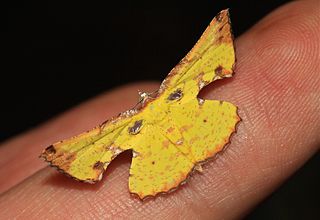
Corymica is a genus of moths in the family Geometridae described by Francis Walker in 1860.

Derambila is a genus of moths in the family Geometridae first described by Francis Walker in 1863.

Fascellina is a genus of moths in the family Geometridae described by Francis Walker in 1860.

Hyperythra is a genus of moths in the family Geometridae. It was erected by Achille Guenée in 1857.

Hypochrosis is a genus of moths in the family Geometridae. It was erected by Achille Guenée in 1857.
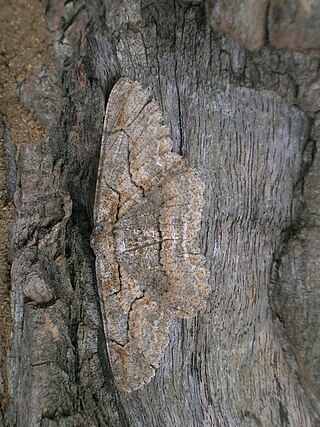
Hypomecis is a genus of moths in the family Geometridae first described by Jacob Hübner in 1821.
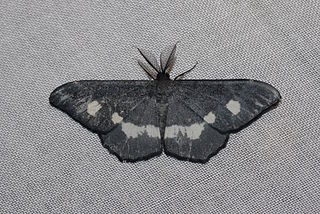
Hyposidra is a genus of moths in the family Geometridae first described by Achille Guenée in 1857.
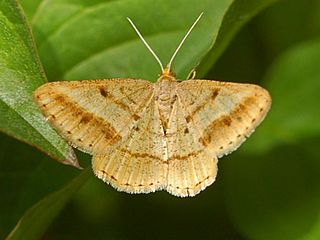
Isturgia is a genus of moths in the family Geometridae described by Jacob Hübner in 1823.

Macaria is a genus of moths in the family Geometridae erected by John Curtis in 1826. It is sometimes placed as a synonym of Semiothisa. Species are cosmopolitan.

Myrteta is a genus of moths in the family Geometridae. It was first described by Francis Walker in 1861.
Nadagara is a genus of moths in the family Geometridae first described by Francis Walker in 1861.
Noreia is a genus of moths in the family Geometridae first described by Francis Walker in 1861.

Polynesia is a genus of moths in the family Geometridae. Species are found throughout India, Sri Lanka and Andaman Islands.

Sauris is a genus of moths in the family Geometridae erected by Achille Guenée in 1857.
Scardamia is a genus of moths in the family Geometridae.

Timandra is a genus of moths in the family Geometridae first described by Philogène Auguste Joseph Duponchel in 1829.
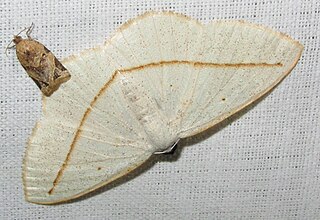
Lomographa inamata is a moth in the family Geometridae first described by Francis Walker in 1860. It is found in Sri Lanka, Japan, China, India and Taiwan.

Hyposidra talaca, the black looper or black inch worm, is a moth of the family Geometridae. The species was first described by Francis Walker in 1860. It is found from India to Indochina, Sundaland, Sulawesi, the Philippines, Sri Lanka, the Solomon Islands, Thailand, Taiwan, New Guinea and Australia, where it has been recorded from Queensland. It is a major defoliating pest in tea plantations.
Luxiaria phyllosaria is a moth of the family Geometridae first described by Francis Walker in 1860. It is found in Sri Lanka, the north-eastern Himalayas of India, Sumatra, Borneo, the Philippines and Sulawesi.














